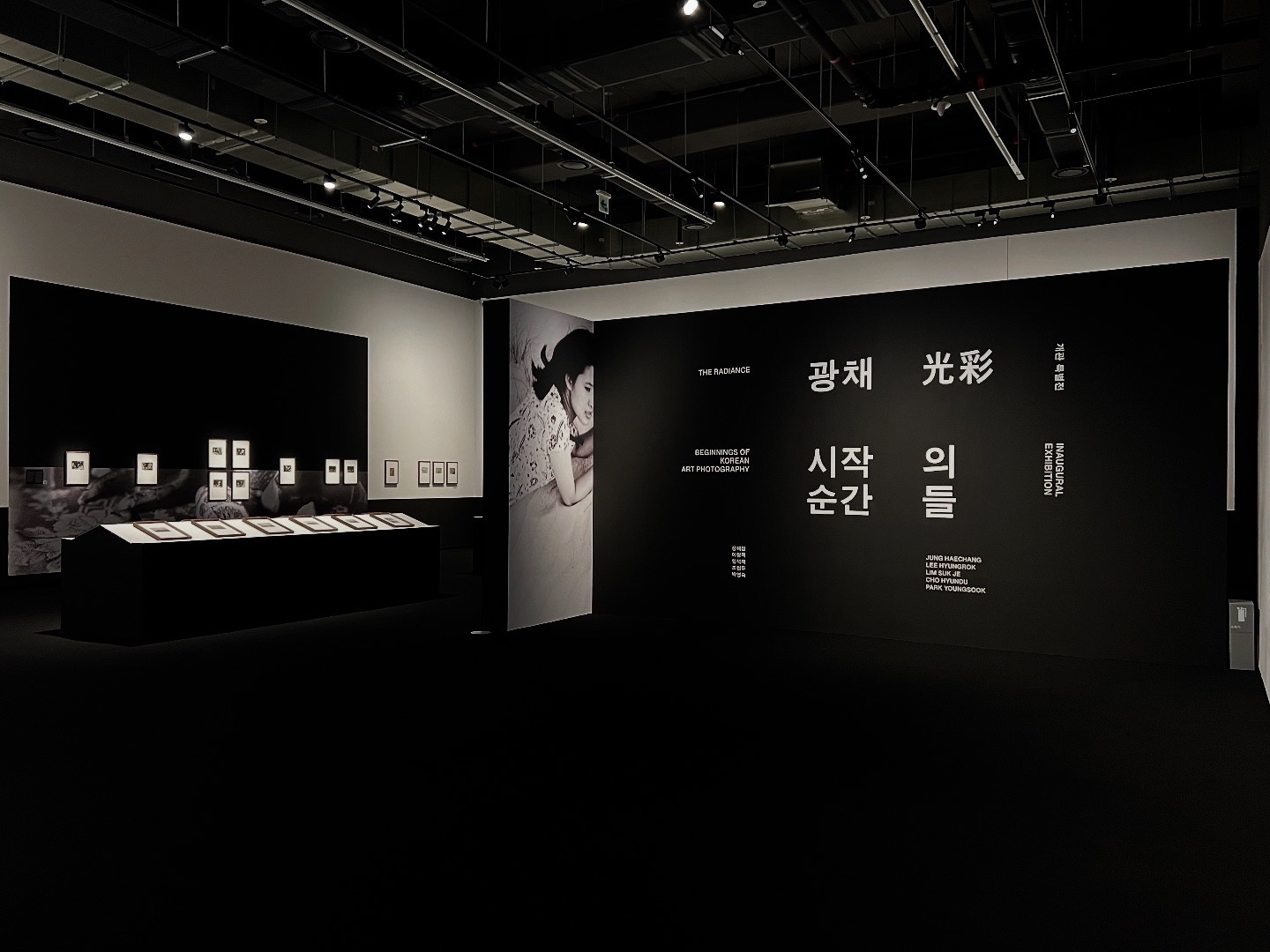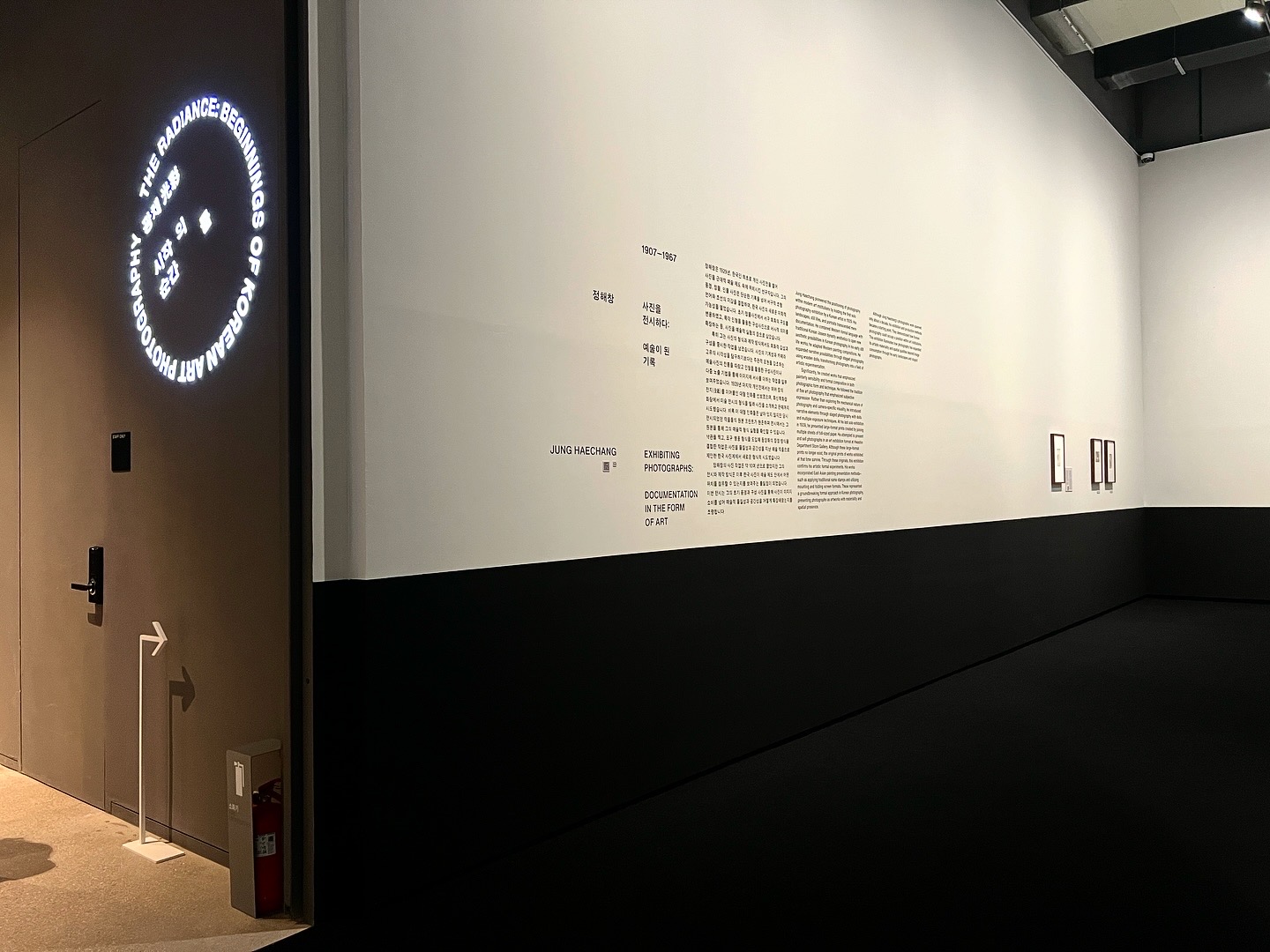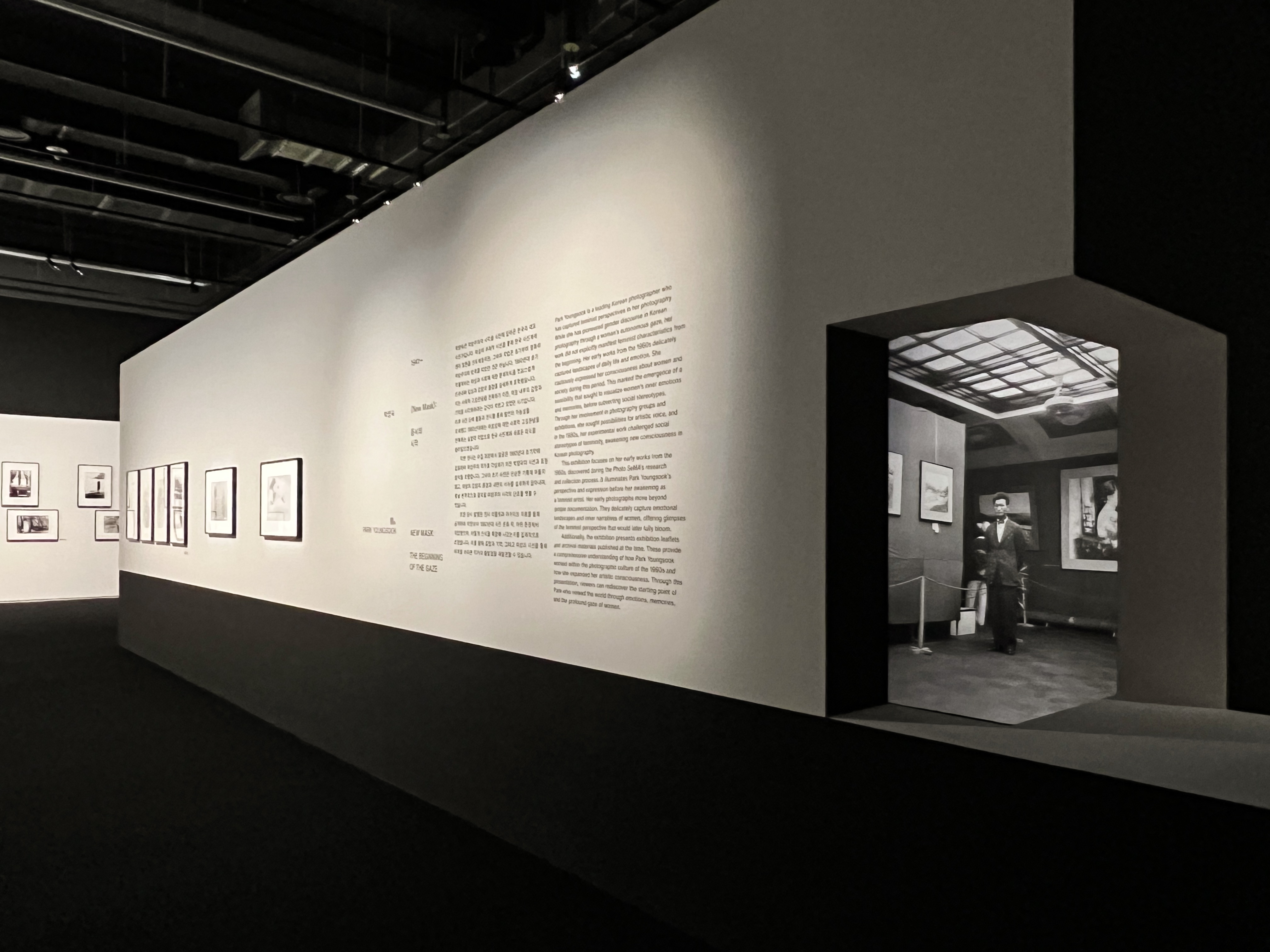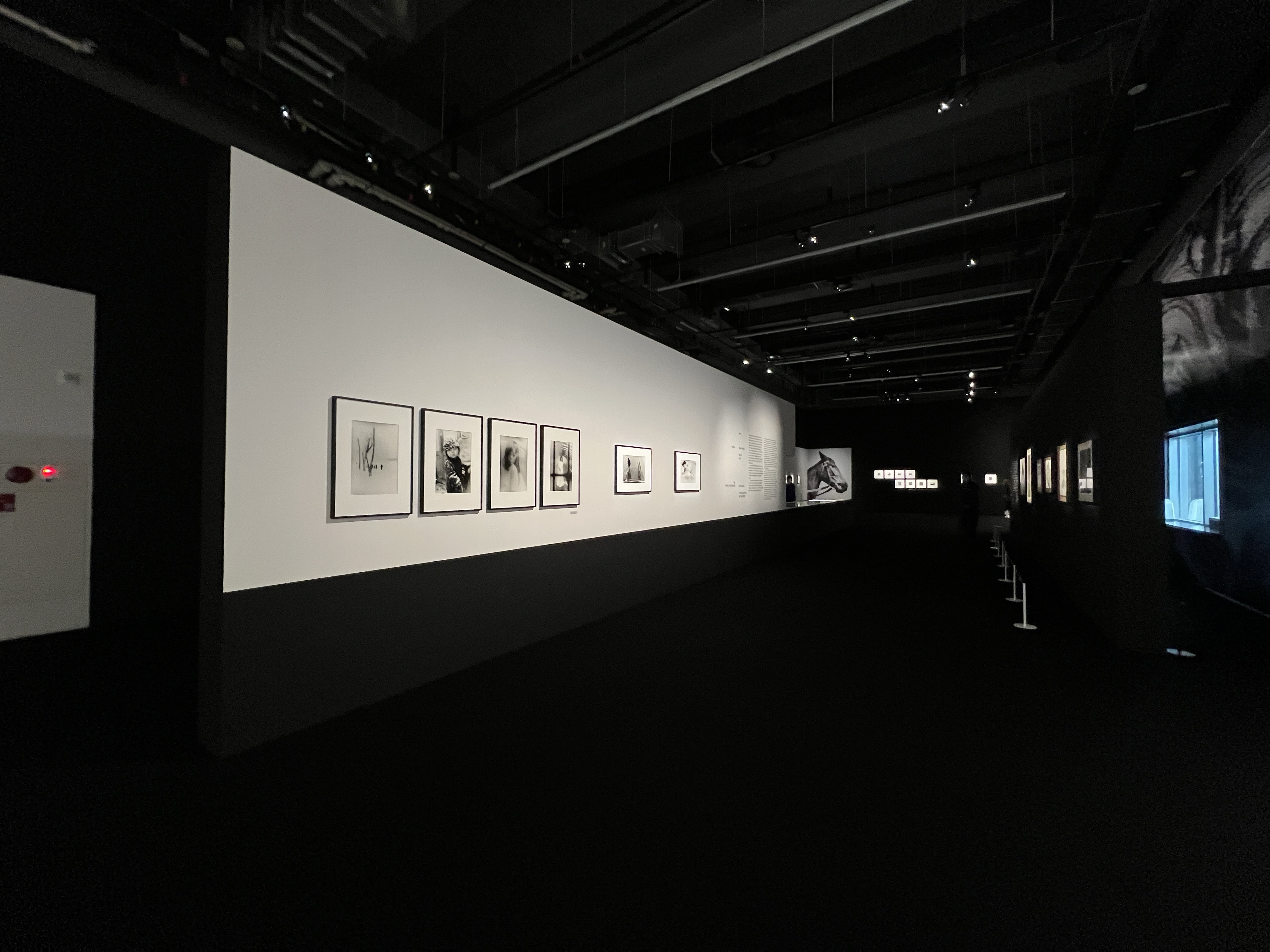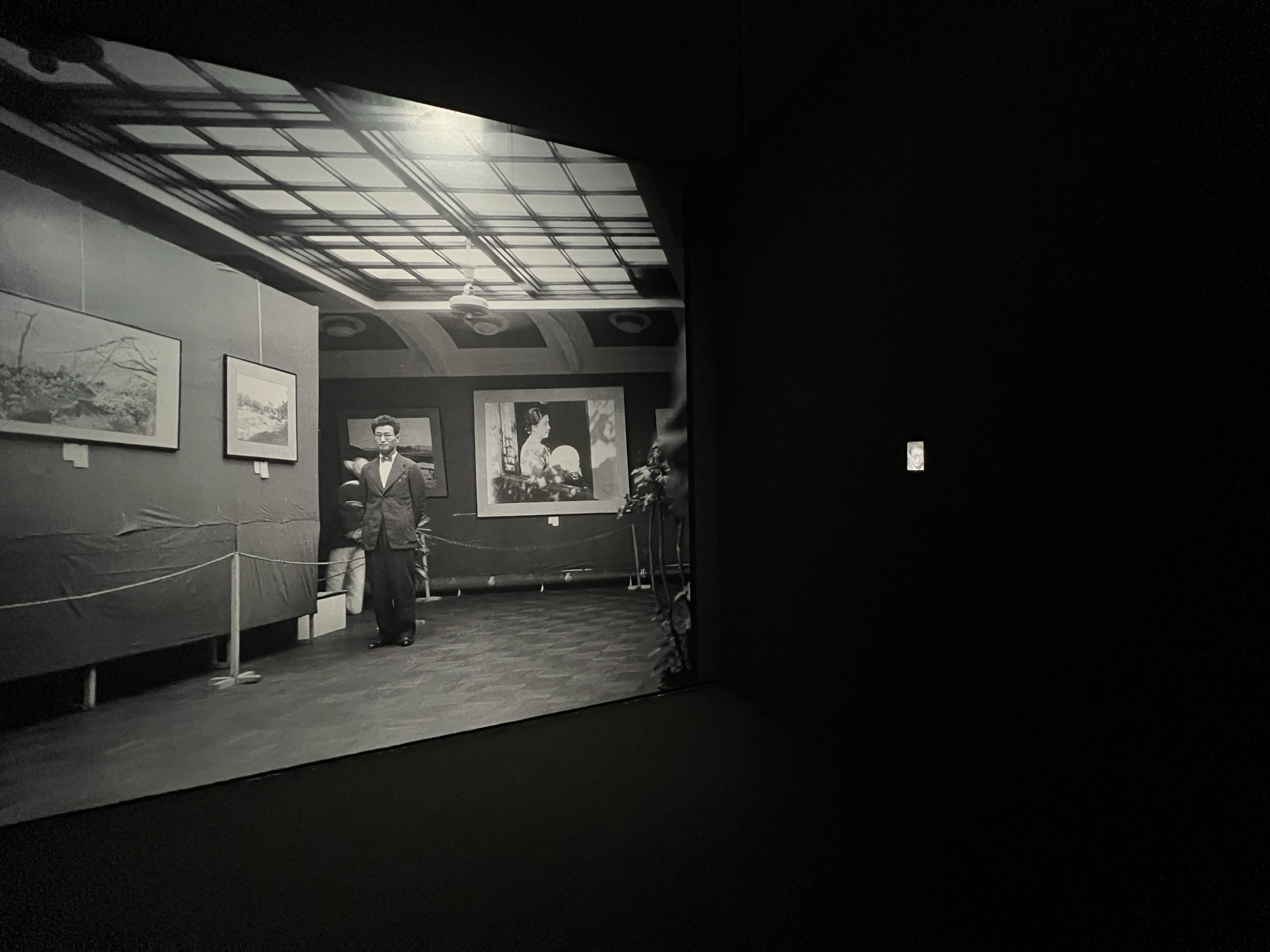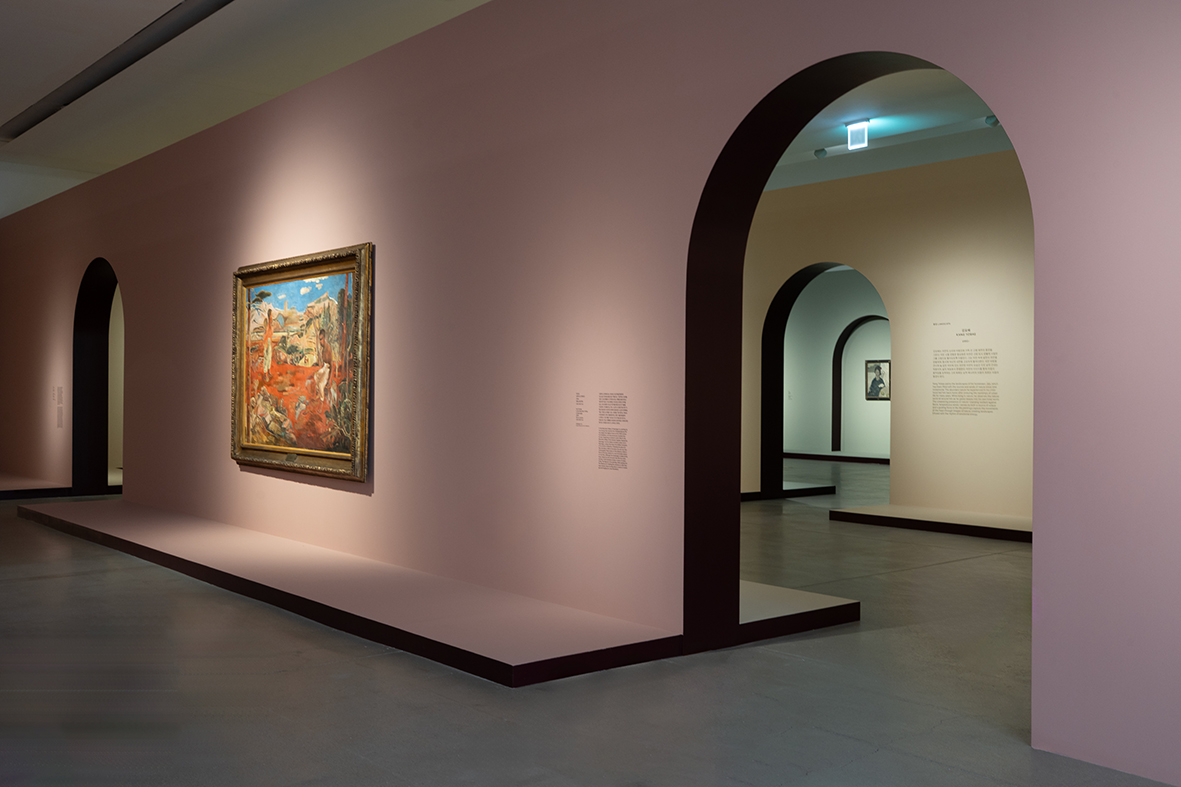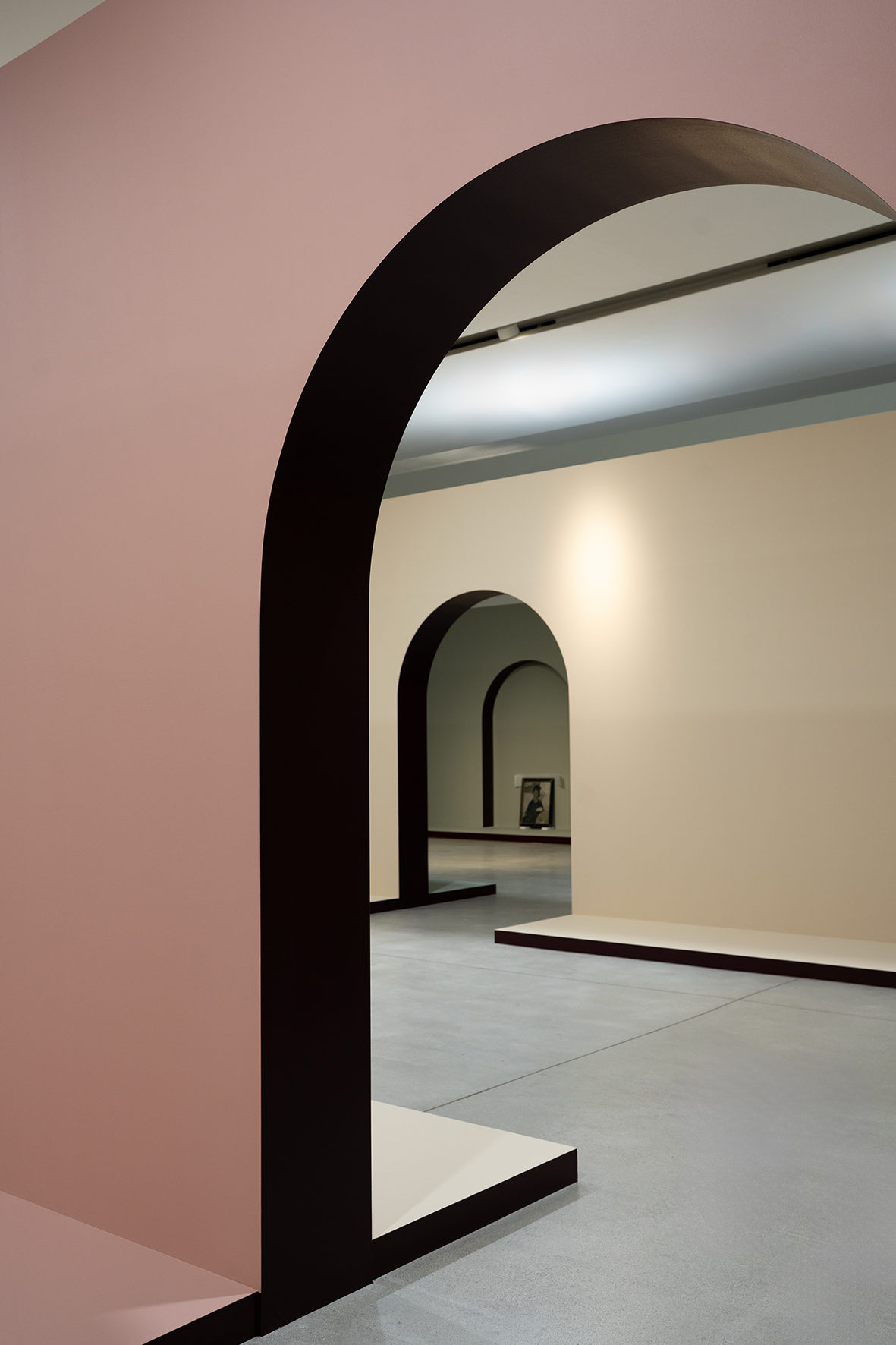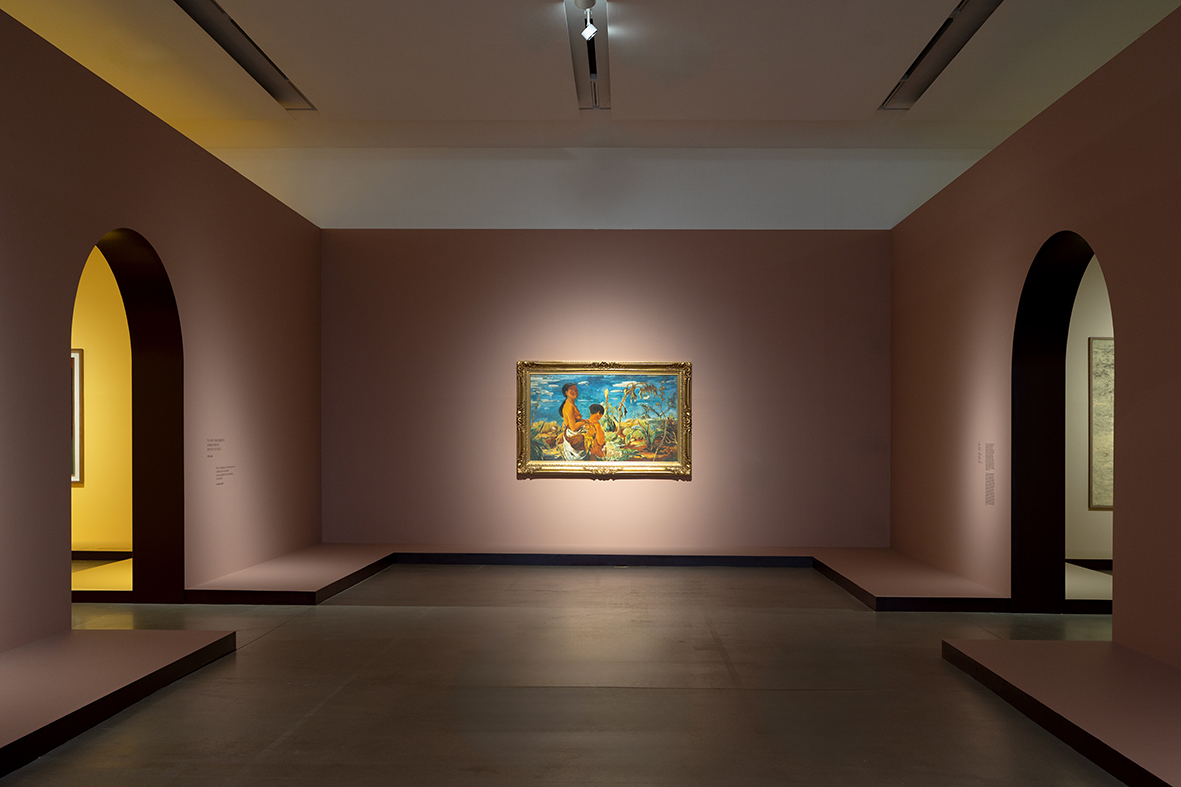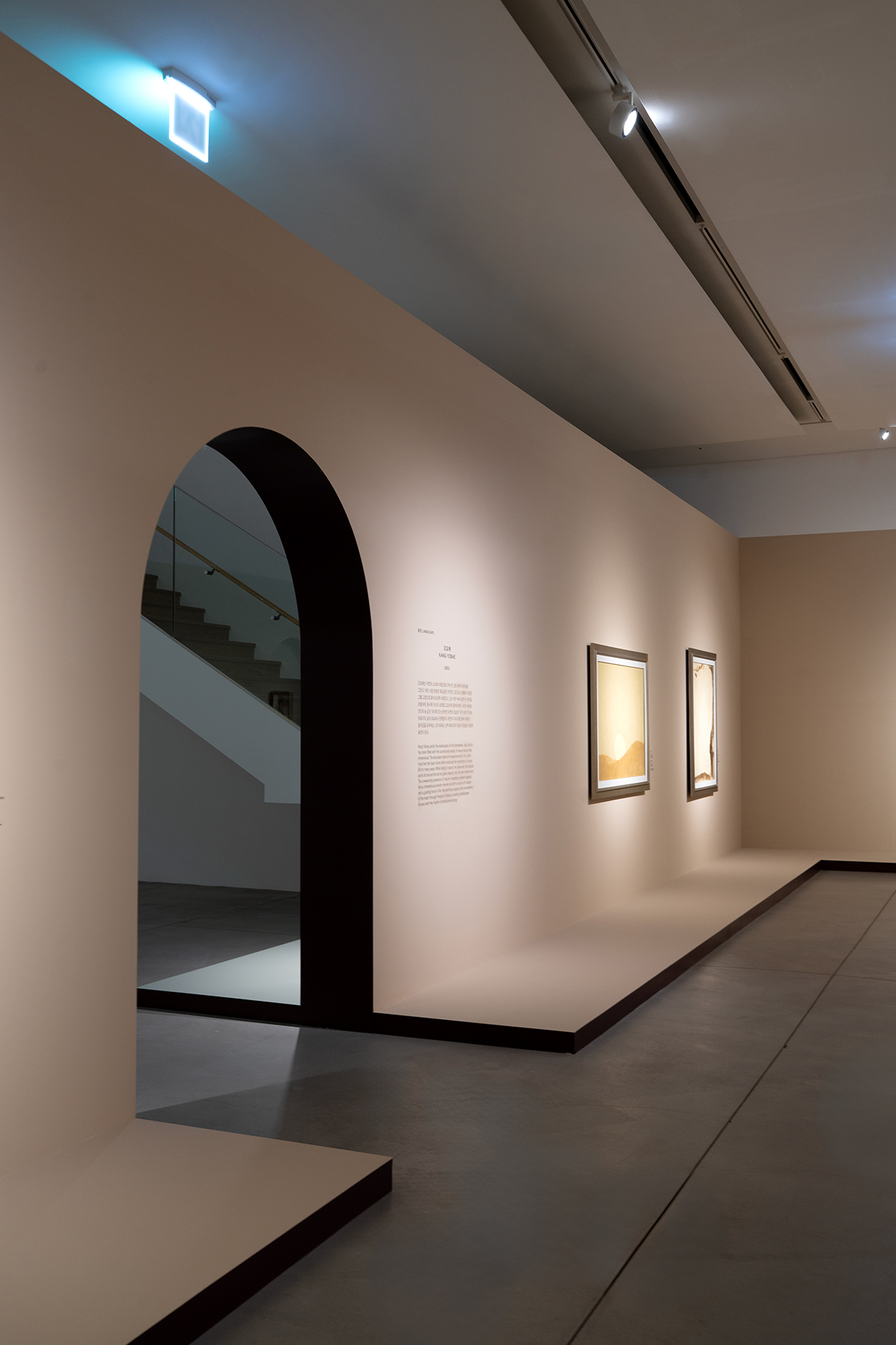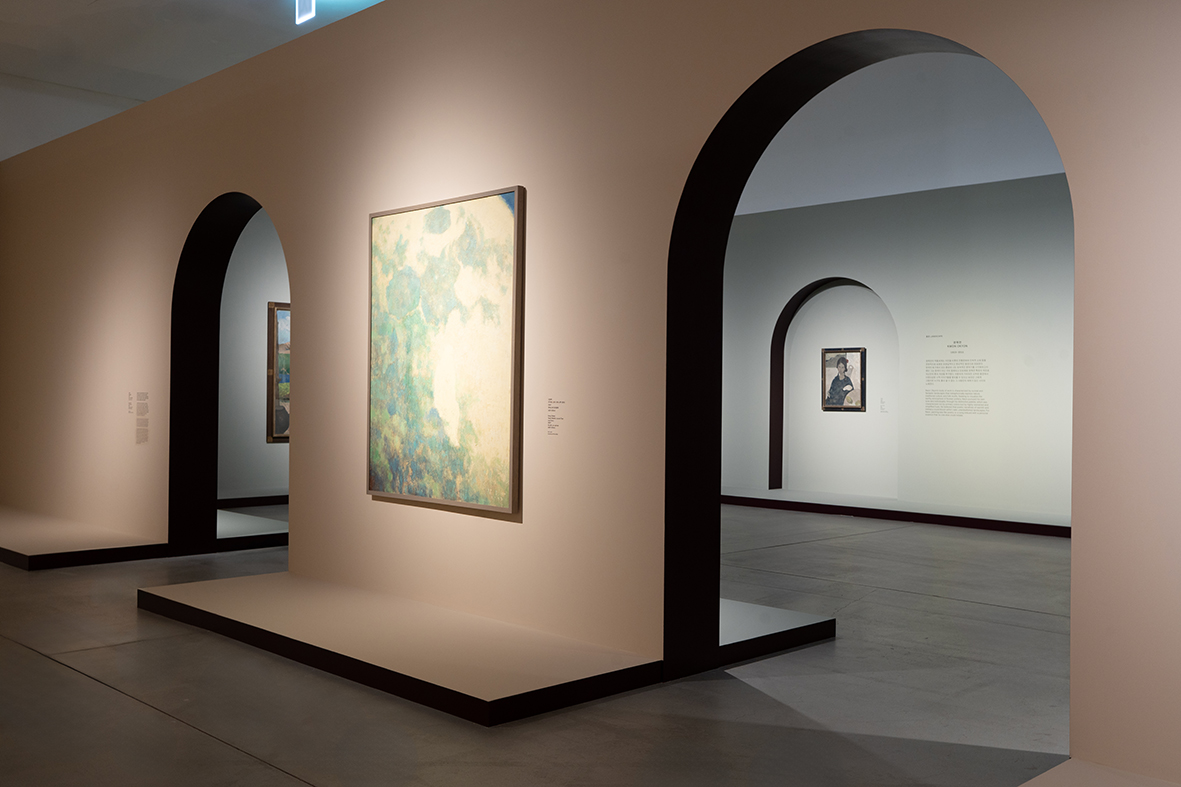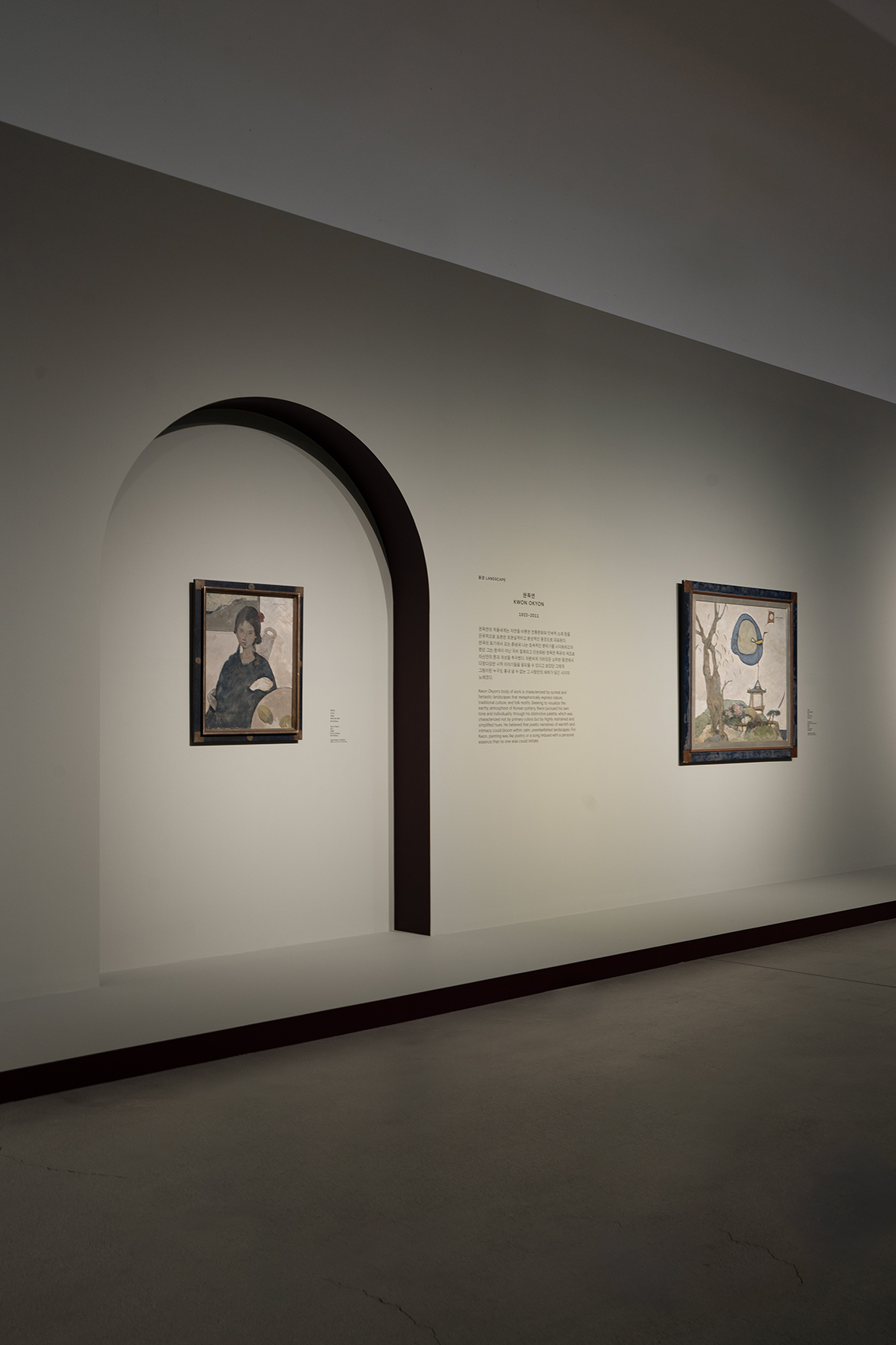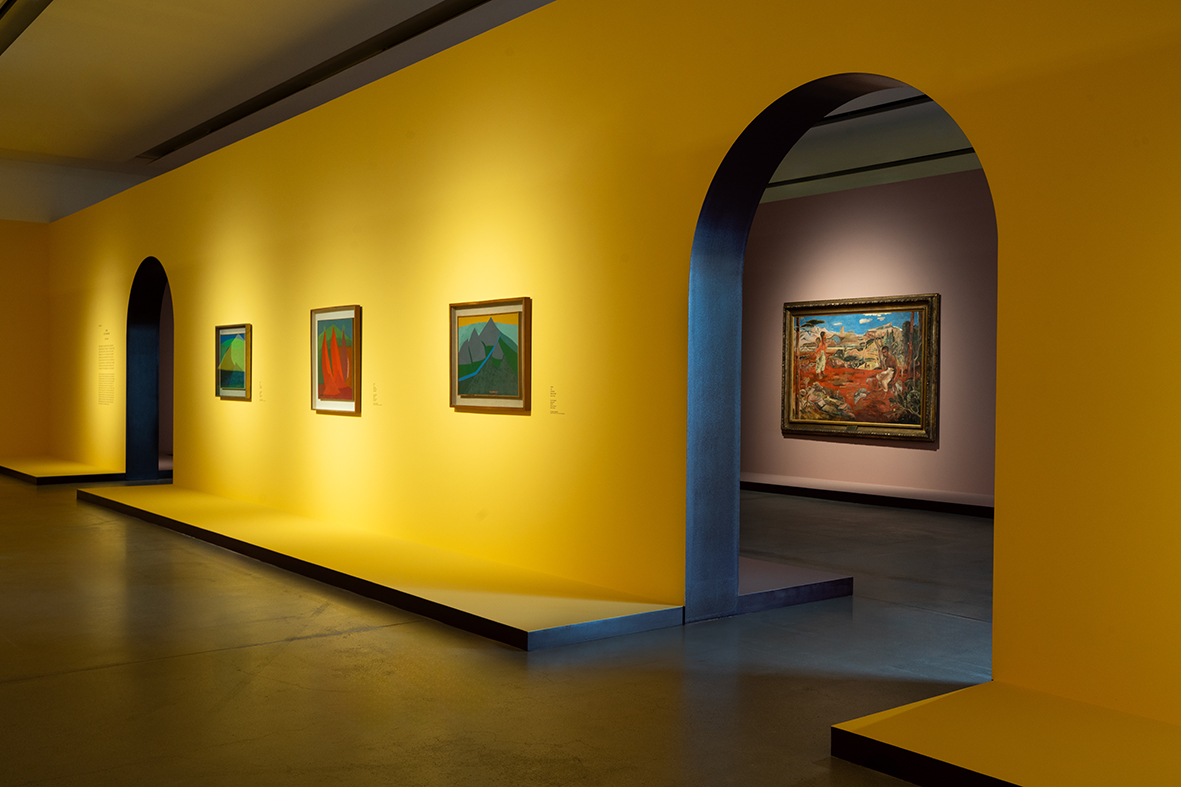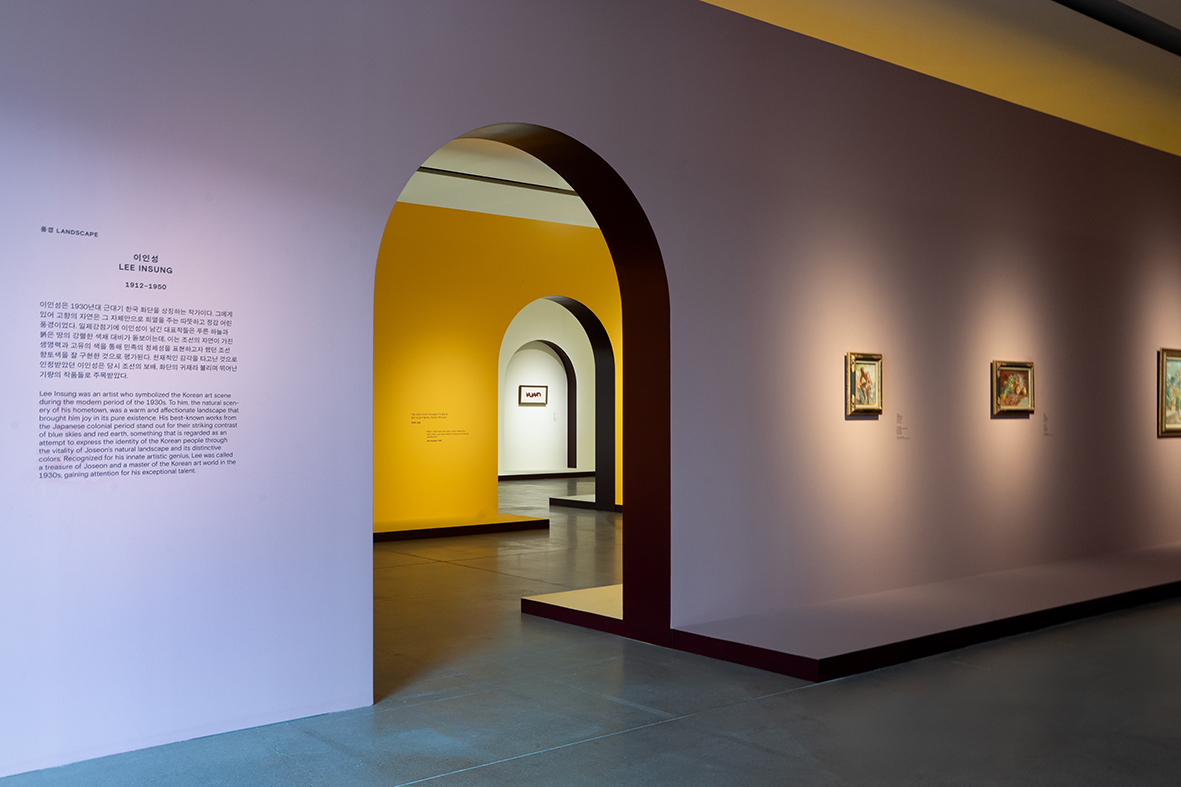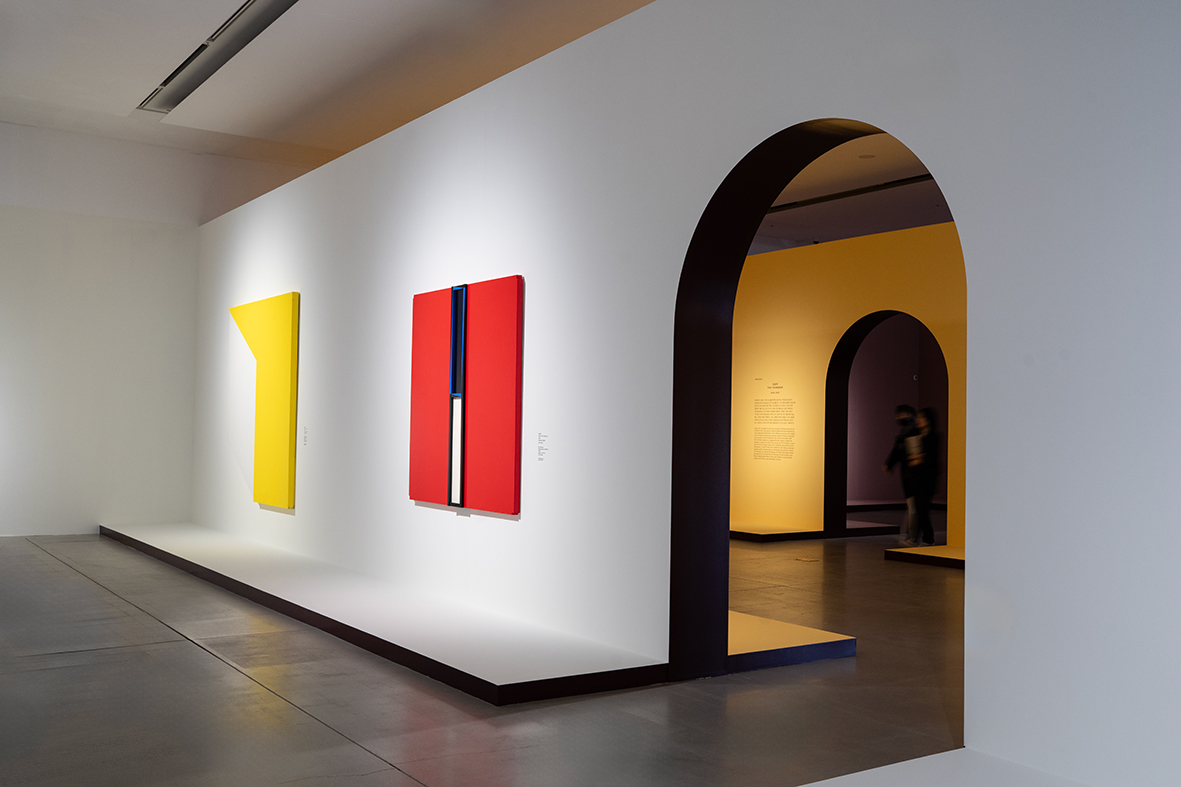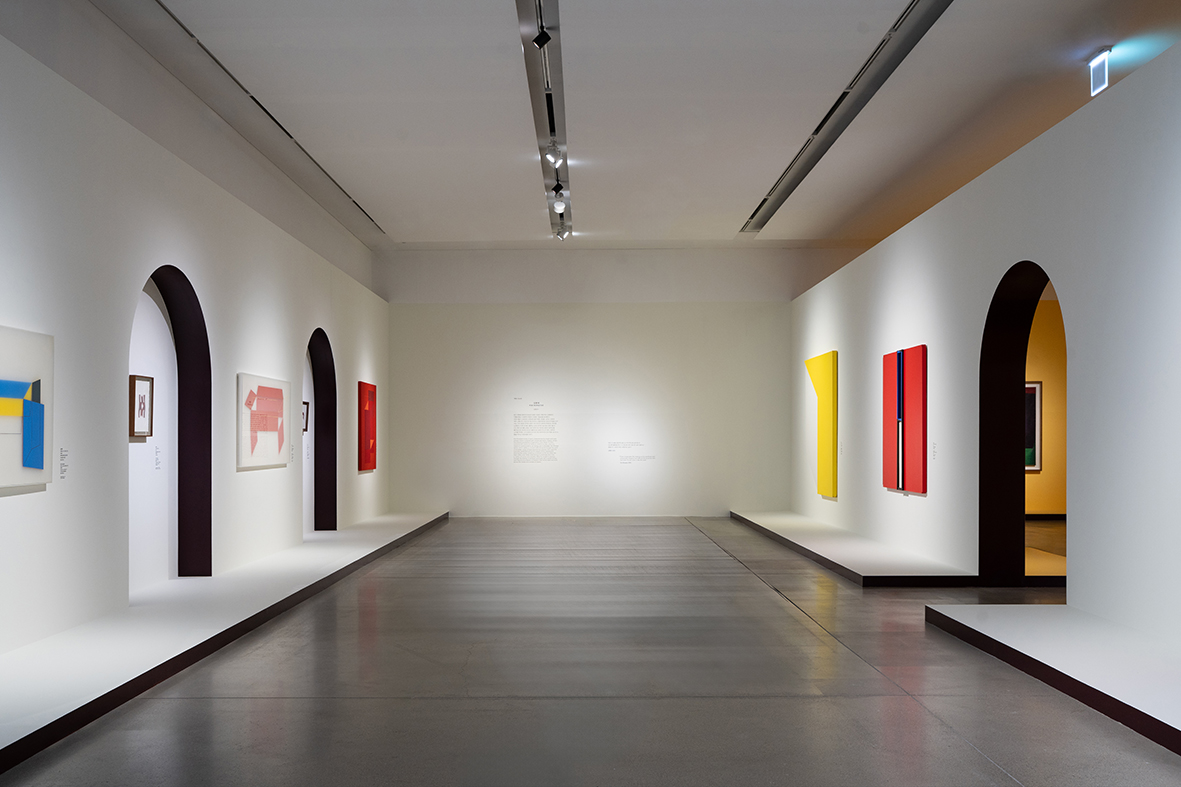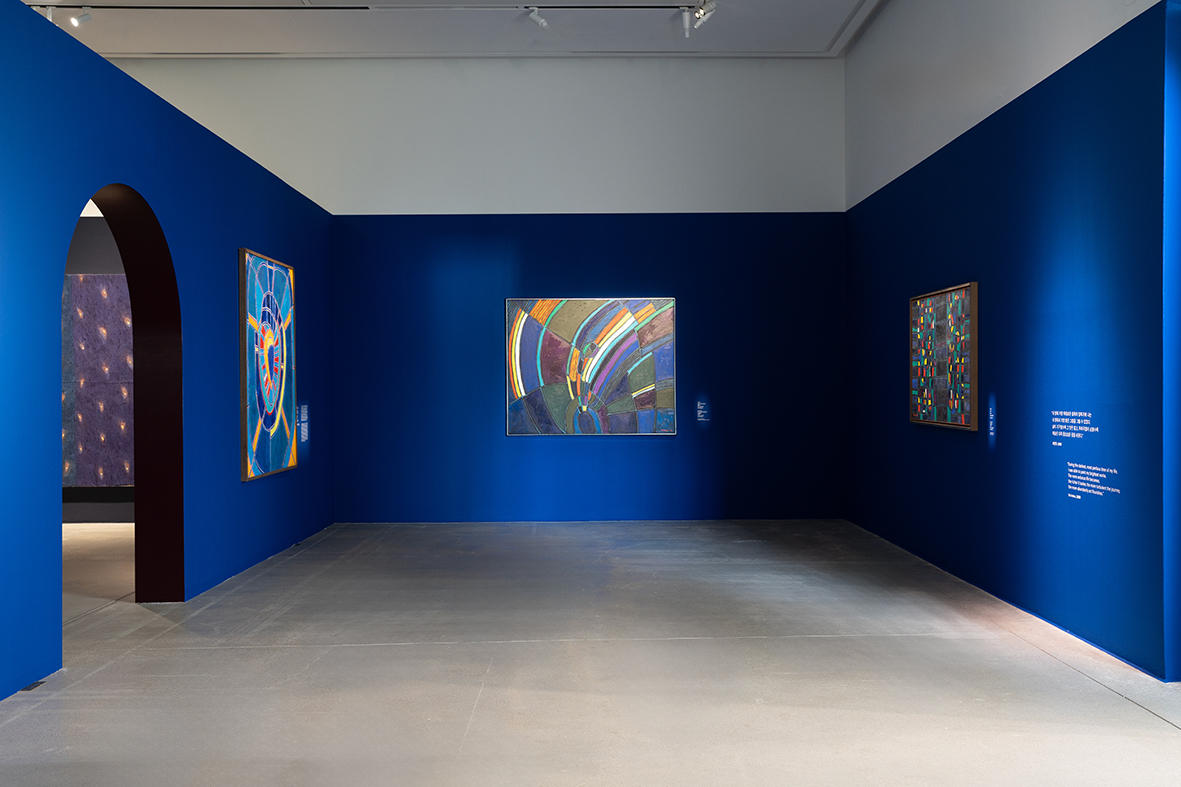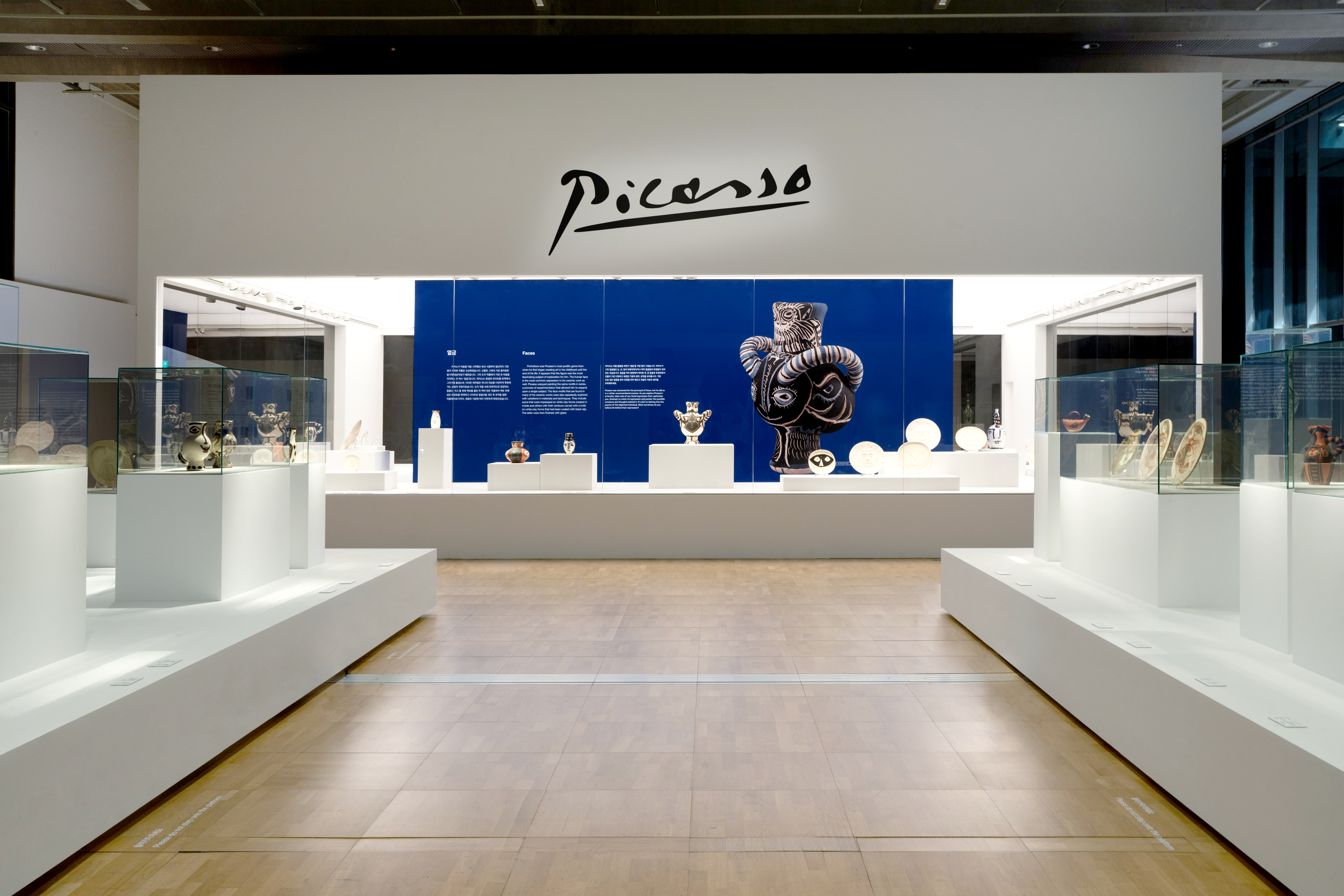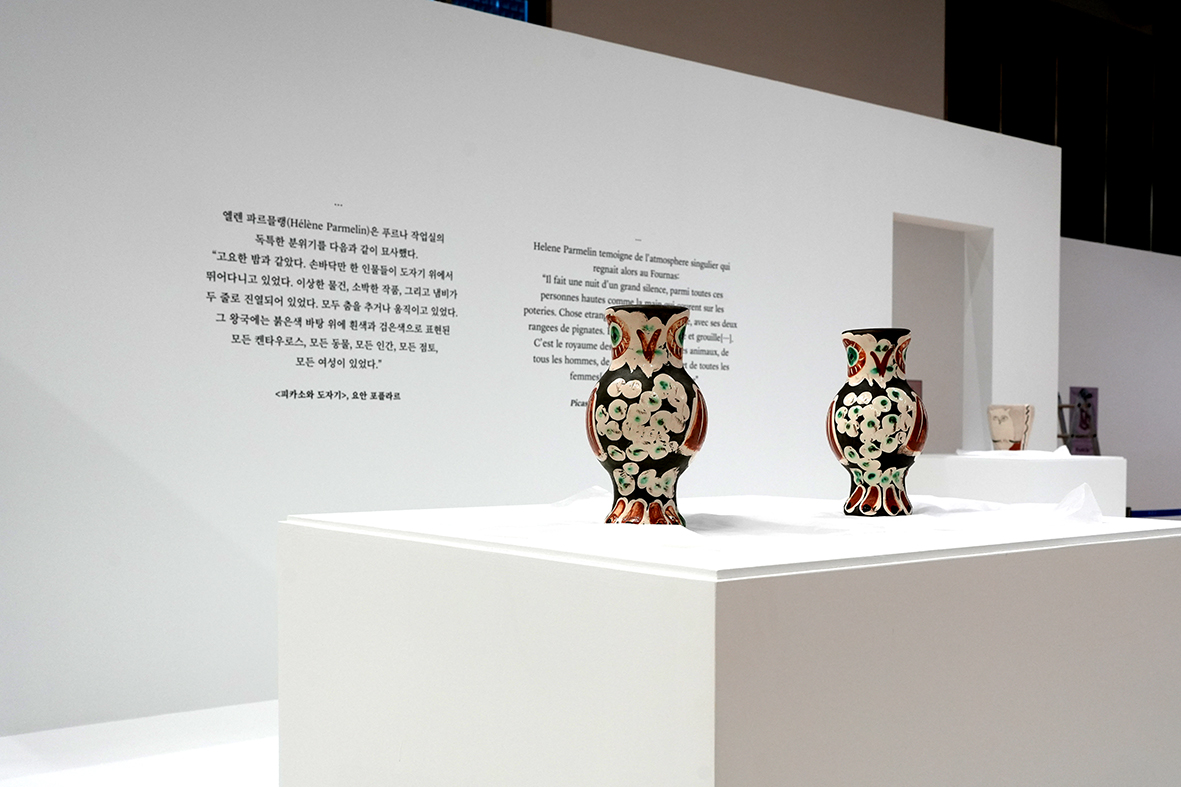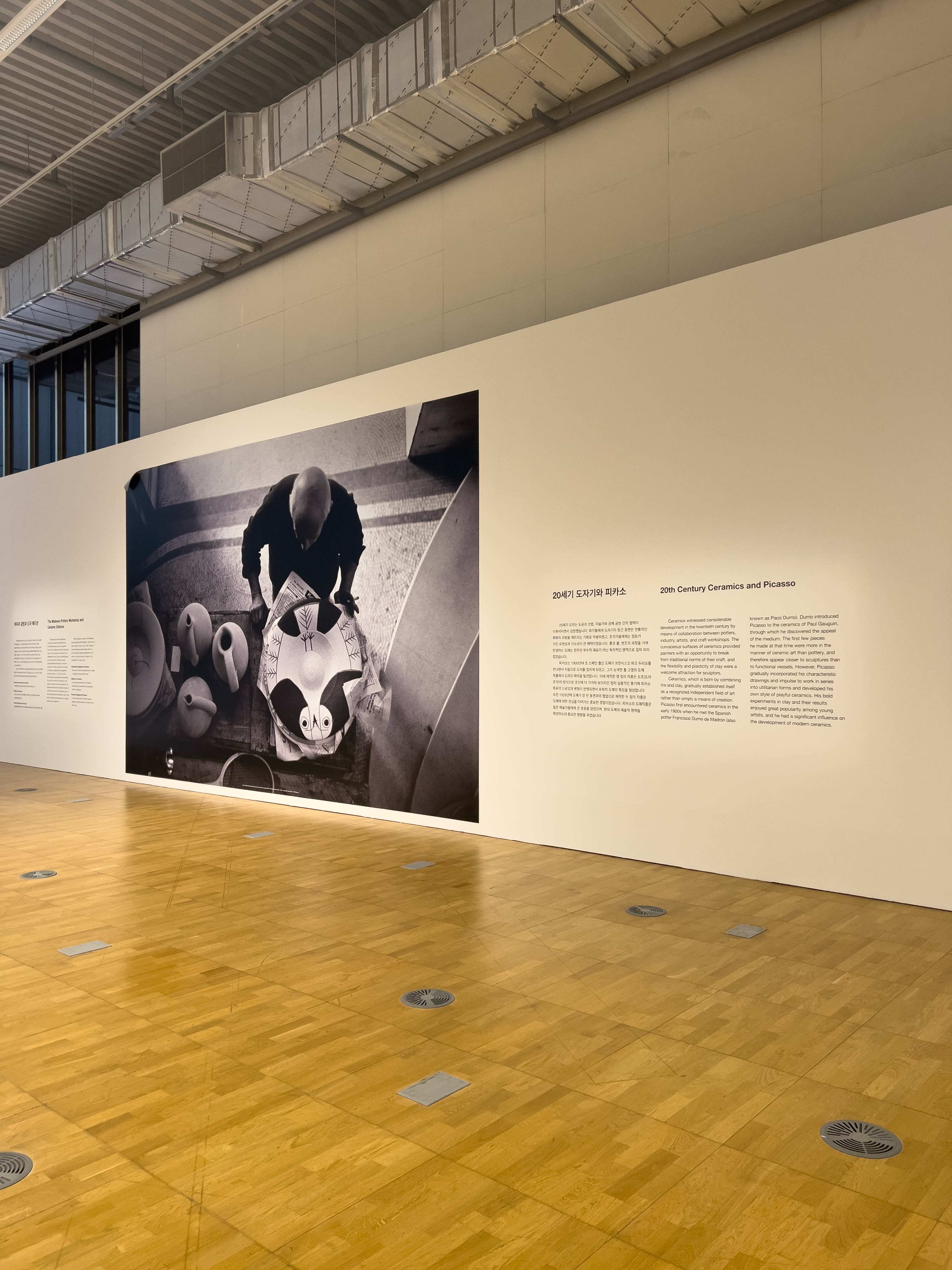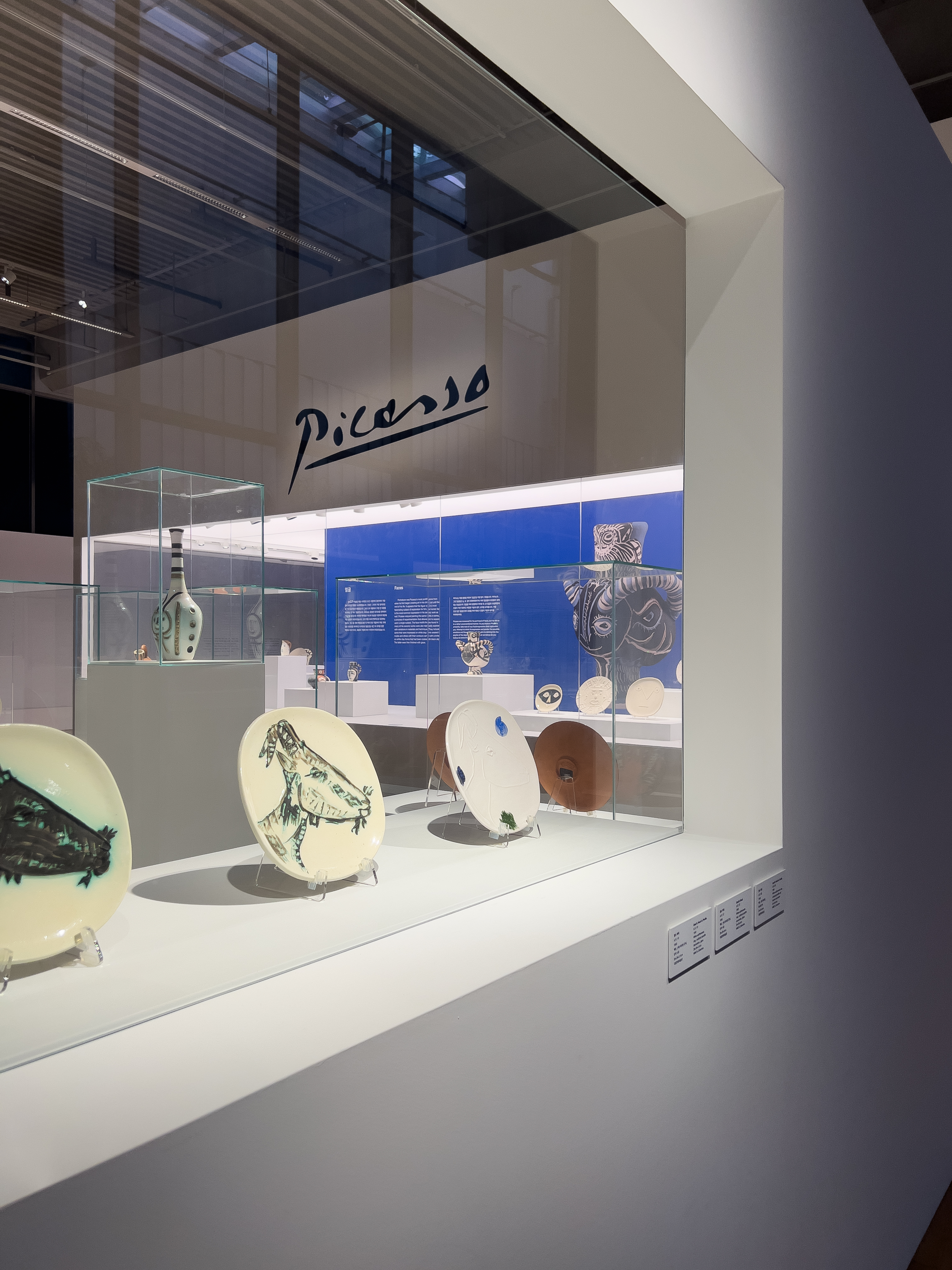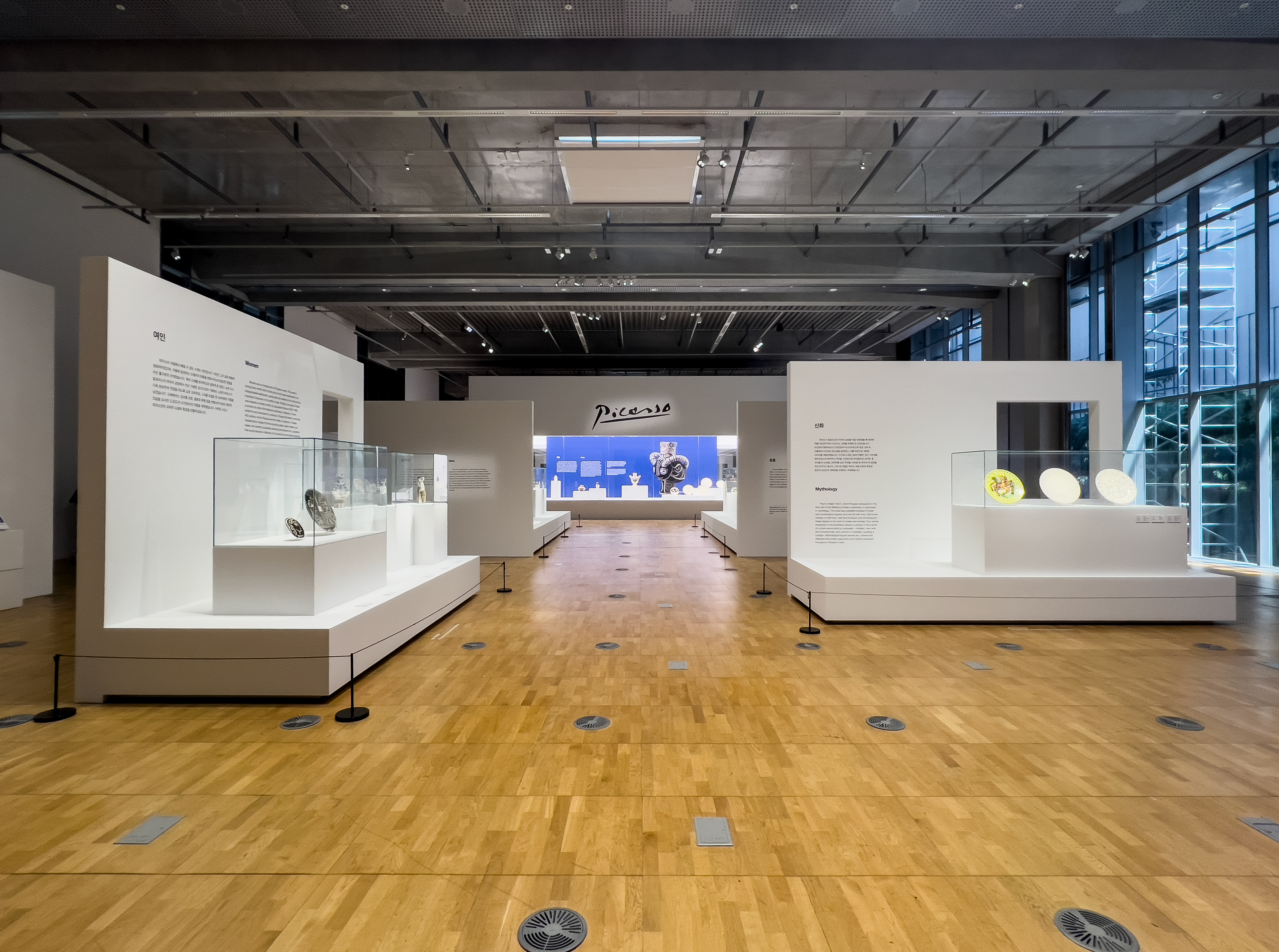The Radiance:
Beginning of Korean Art Photography
2025
서울시립사진미술관 개관 특별전
광채 光彩 : 시작의 순간들
Photography Seoul Museum of Art
Curator: Hyunjung Son
Artists: 정해창, 이형록, 임석제, 조현두, 박영숙
A World of Paintings: On the Lee Kun-hee Collection
2025
그림이라는 별세계: 이건희컬렉션과 함께
Seoul Museum of Art, Buk-Seoul
Curator: Suyeon Do
Artists: Kang Yobae, Quac Insik, Kwon Okyon, Kim Bongtae, Bang Haija, Yoo Youngkuk, Lee Insung, Ha Indoo
강요배, 곽인식, 권옥연, 김봉태, 방혜자, 유영국, 이인성, 하인두
A World of Paintings: A Journey Through the Space of Painting
Painting—one of the most enduring forms in art history—has long been the act of rendering form and color upon a flat surface. Yet in A World of Paintings, the medium transcends its traditional frame. Here, painting expands beyond the canvas and into space itself, unfolding as a lived experience. This exhibition traces the artistic paths of eight painters who, across the tumult of Korea’s modern and contemporary history, pursued a world that only painting could express. Their works, drawn from the Lee Kun-hee Collection and various public and private institutions, form a resonant, polyphonic narrative across time.The exhibition is composed of eight spatial sections, each framed by an archway and enveloped in a distinct hue. These chromatic environments serve not only as visual thresholds but as emotional and conceptual passages—inviting viewers to inhabit the tempo, tone, and texture of each artist’s world. Blush pinks suggest warmth and introspection, brilliant yellows vibrate with life, deep blues summon meditative focus, and muted whites evoke quiet clarity. As visitors move from one space to the next, they do not simply view paintings; they traverse a landscape of memory, sensation, and spirit.
SECTION 1 – Appearance, Scenes, and Nature
The journey begins with depictions of the visible world—figures, landscapes, and still lifes that anchor the artists’ gaze. These are not passive images of nature but intimate reconstructions of remembered places, imagined terrains, and emotional geographies. Through this lens, nature becomes more than subject matter—it emerges as metaphor, vessel, and mirror of the inner life. In this space, viewers are gently invited to walk alongside the artists' memories, dreams, and longings.SECTION 2 – Color Is Alive
In the second section, form yields to the force of color. These paintings embrace abstraction, distilling visual language into fields of hue and structure. Color is not a means to an end—it is the very subject, animated and essential. With each step, viewers are enveloped by tones that pulse and radiate, evoking the primal energy of the natural world. Color, in this space, is not observed—it is experienced.SECTION 3 – The Act of Spiritual Practice through Materials
The final gallery opens onto a space of contemplation. Here, painting becomes an act of devotion: a rhythmic encounter between the artist and the material world. Through repeated gestures and layered pigments—sometimes even applied to the reverse side of the paper—color begins to breathe, bleed, and transcend its surface. This is painting as meditation, as ritual, as a search for essence. The room is hushed, yet quietly radiant.공간을 걷는 회화의 세계
회화는 평면에 색과 형을 얹는 가장 오래된 예술 형식이지만, 이 전시에서 회화는 단지 벽에 걸린 이미지가 아닙니다. 회화는 통로이며 문이며, 공간 자체가 됩니다. ‘그림이라는 별세계: 이건희 컬렉션과 함께' 는 한국 근현대사를 관통하며 ‘그리는 행위’를 통해 자신만의 세계를 구축해온 여덟 명의 작가들을 조명합니다. 전시는 단지 작품을 나열하는 것을 넘어, 각 작가의 예술적 언어를 하나의 색과 리듬으로 풀어낸 여덟 개의 아치형 공간으로 구성되어 있습니다. 그 속에서 회화는 벽 위에만 머무르지 않고, 공간 전체에 숨을 쉽니다.관람자는 전시장에 들어서는 순간 하나의 세계에 입장합니다. 공간마다 다른 색으로 입혀진 아치형 문을 지나며, 관람자는 작가들의 내면, 시대, 그리고 기억 속을 걸어가게 됩니다. 분홍빛 벽은 사적이고 따뜻한 회화적 시선을 비추고, 노란 공간은 생생한 색채의 숨결을 품습니다. 푸른 방에 들어서면 색이 살아 움직이며 빛을 내고, 차분한 흰 공간은 물질과 호흡하는 작가의 수행적 태도를 담아냅니다.
2024 MMCA Lee Kun-hee Collection: Picasso Ceramics
2024 ACC-국립현대미술관 교류협력전
MMCA 이건희컬렉션 《피카소 도예》
Client
ACC Asia Culture Center
Venue
Space 4
Curator
Aekyung Lee
Co-organized by
National Museum of Modern and Contemporary Art Korea(MMCA)
Into Form: Picasso’s Ceramics as a Spatial Encounter
To step into this exhibition is to enter a landscape shaped not only by works of art, but by the very act of looking, moving, and dwelling among them. The 2024 MMCA Lee Kun-hee Collection: Picasso Ceramics brings together 107 ceramic pieces by Pablo Picasso, generously donated to the MMCA in 2021. These works—playful, tactile, and brimming with invention—unfold across a luminous sequence of rooms that are both intimate and open, guiding visitors through the many facets of Picasso’s ceramic imagination.The exhibition design reflects the spirit of Picasso himself: bold in form, clean in structure, yet alive with mischief and metaphor. Each room is carved into volumes—vignettes of space that frame, conceal, and reveal. Walls punctuated with portals invite both childlike curiosity and formal contemplation. The ceramics rest on plinths like miniature stages, and the visitor becomes both viewer and participant in a visual theatre of form and fire.
Here, Picasso’s ceramics are not simply decorative objects, but sculptural expressions of his painterly vision. Rendered in clay, mythological creatures, human faces, animals, and symbols are animated with strokes of color and incised line. The space itself encourages a close encounter: viewers are drawn in by the scale, the intimacy, and the play of light on glazed surfaces. Picasso’s humor, irreverence, and philosophical depth all find voice in these vessels, dishes, and jars—objects that pulse with life.
Organized into nine thematic sections, the exhibition flows organically, yet deliberately. Each zone offers a distinct mood: some rooms teem with fantastical figures, while others exude a quiet material elegance. As the visitor moves through, the shifting sightlines and spatial rhythms echo the artist’s restless experimentation.
What emerges is not just an introduction to Picasso’s ceramics, but a rethinking of space itself. The boundaries between painting and sculpture, function and fantasy, surface and volume dissolve. Picasso regarded ceramics as both medium and metaphor—an opportunity to fuse tradition with radical transformation. This exhibition captures that alchemy, offering a rare opportunity to witness his boundless creativity in three dimensions.
Ultimately, Picasso Ceramics is not only about objects—it is about experience. It is about walking through ideas made tangible, about pausing to observe how a line curves along clay, about discovering joy where art meets play. In the serenity of white-walled rooms and the warmth of wood beneath one’s feet, we are reminded of how art can reshape the space we inhabit—and, in turn, expand our way of seeing the world.
공간 안에서 숨 쉬는 조형 언어
이번 전시는 피카소의 도예 세계를 조형적으로 재해석함과 동시에, 공간을 매개로 예술과 관람자 사이의 새로운 관계를 설계하는 작업이었습니다. 2024 MMCA 이건희 컬렉션: 피카소 도예의 전시 디자인은 단순한 작품 배치를 넘어서, ‘형태를 어떻게 경험하게 할 것인가’라는 질문에서 출발합니다. 우리가 설계한 공간은 단순한 전시장이 아닌, 피카소의 도자 오브제와 그것을 응시하는 관람자의 움직임이 서로를 구성하는 하나의 열린 구조입니다.전체 공간은 세라믹이라는 매체의 물성과 조형적 볼륨을 고려하여, 부피감 있는 구조와 개방된 시야가 조화를 이루도록 설계되었습니다. 벽체는 작품을 담는 배경이자, 시선의 흐름을 안내하는 건축적 장치로 기능하며, 반복적으로 삽입된 개구부들은 관람의 리듬을 만들어냅니다. 각 구조물 사이의 틈, 창, 프레임은 시선의 깊이와 작품 간의 대화를 유도하며, 관람자의 움직임에 따라 다양한 각도에서 피카소의 조형 언어가 드러날 수 있도록 의도되었습니다.
이번 전시에서 공간은 ‘기능’이 아닌 ‘형식의 해석’으로서 존재합니다. 흙, 선, 색이라는 가장 근본적인 조형 요소들이 피카소의 손을 거쳐 회화적 오브제로 전환되었듯, 우리는 공간 역시 그 흐름에 맞춰 설계했습니다. 벽체는 정적인 구조물이 아니라, 오브제와 오브제 사이의 호흡을 만들어내는 간격이자, 관람자가 자연스럽게 서고 걷고 멈추는 리듬의 단위입니다.
공간 구성의 중요한 핵심 중 하나는 ‘가시성과 거리감’입니다. 도자 작품의 물성은 그 형태와 표면, 질감에 대한 섬세한 관찰을 요구하기에, 각 전시대는 시각적 명료성과 거리의 안정감을 고려해 배치하였습니다. 또한 낮은 시선의 어린이 관람자와 다양한 연령층이 함께 관람할 수 있도록 일부 벽체는 창처럼 열려 있으며, 시야가 열린 구획은 전체 동선을 압박하지 않고 자연스러운 흐름을 가능하게 합니다.
색과 재료의 선택 또한 중요했습니다. 전체 구조물은 중성 톤의 밝은 색상으로 마감되어 작품이 중심에 놓일 수 있도록 하였고, 기존의 목재 바닥과 함께 세라믹의 유약질과 자연스럽게 호응하도록 하였습니다. 특히 FACES 섹션의 블루 월과 대형 도자기 이미지, 그 위의 피카소 사인은 전시 전체의 조형적 하이라이트로서, 피카소의 유쾌한 에너지를 공간적으로 응축시키는 장치입니다.
전시 디자인은 결국 관람자의 몸의 움직임, 시선의 위치, 체류의 시간을 하나의 조형적 흐름으로 엮어내는 일입니다. 피카소의 도예가 보여준 것은 자유로운 상상과 끝없는 변주의 가능성이었다면, 이번 전시 공간은 그 상상력과 마주하는 물리적 무대이며, 예술과 관람자가 교차하는 조형적 장(場)입니다.
Breathe in, Breathe out
2024
Wooran Foundation, Seongsu, Seoul, S. Korea
In the realm of traditional Korean music, jangdan is more than just rhythm—it is a spatial-temporal structure, shaped through the hands of percussionists on instruments like the janggu or buk. Though often defined as a rhythmic pattern, jangdan also carries an internal cycle of tension and release, a pulse that holds both tempo and nuance. Its intricacy resists easy understanding, yet its charm lies in the freedom it allows—improvisational shifts within a steady framework, shaped by the performer’s intuition and the music’s unfolding moment.
This subtle elasticity invites a kind of breathing—with the rhythm, with one another. Within its variations, musicians and listeners become one, sharing a heightened sense of presence.
As you step into this exhibition space, you are invited to move with a similar attunement. Let yourself perceive the shifting tempos of now, breathe with the rhythm of the artworks, and feel the subtle interplay between motion and stillness. Across the space, works by seven artists—Kim Jingon, Moop, Park Ji-won, Seo Minwoo, Lee Donghun, Lim Sunbin, and Tacit Group—reveal their own distinctive beats, intensities, and flows. Each piece offers a tempo, a gesture, a moment of stillness—waiting not just to be viewed, but to be met.
Here, the gallery becomes a score, and your body becomes an instrument. In the rush and resonance of Seongsu-dong’s rhythms—sometimes swift, sometimes soft—this exhibition invites you to discover your own jangdan. To move in sync with your surroundings. To meet a glance, to follow a sound, to listen to your steps echo across the floor.
Breathe. Walk. Listen. The rhythm is already here—with you.
